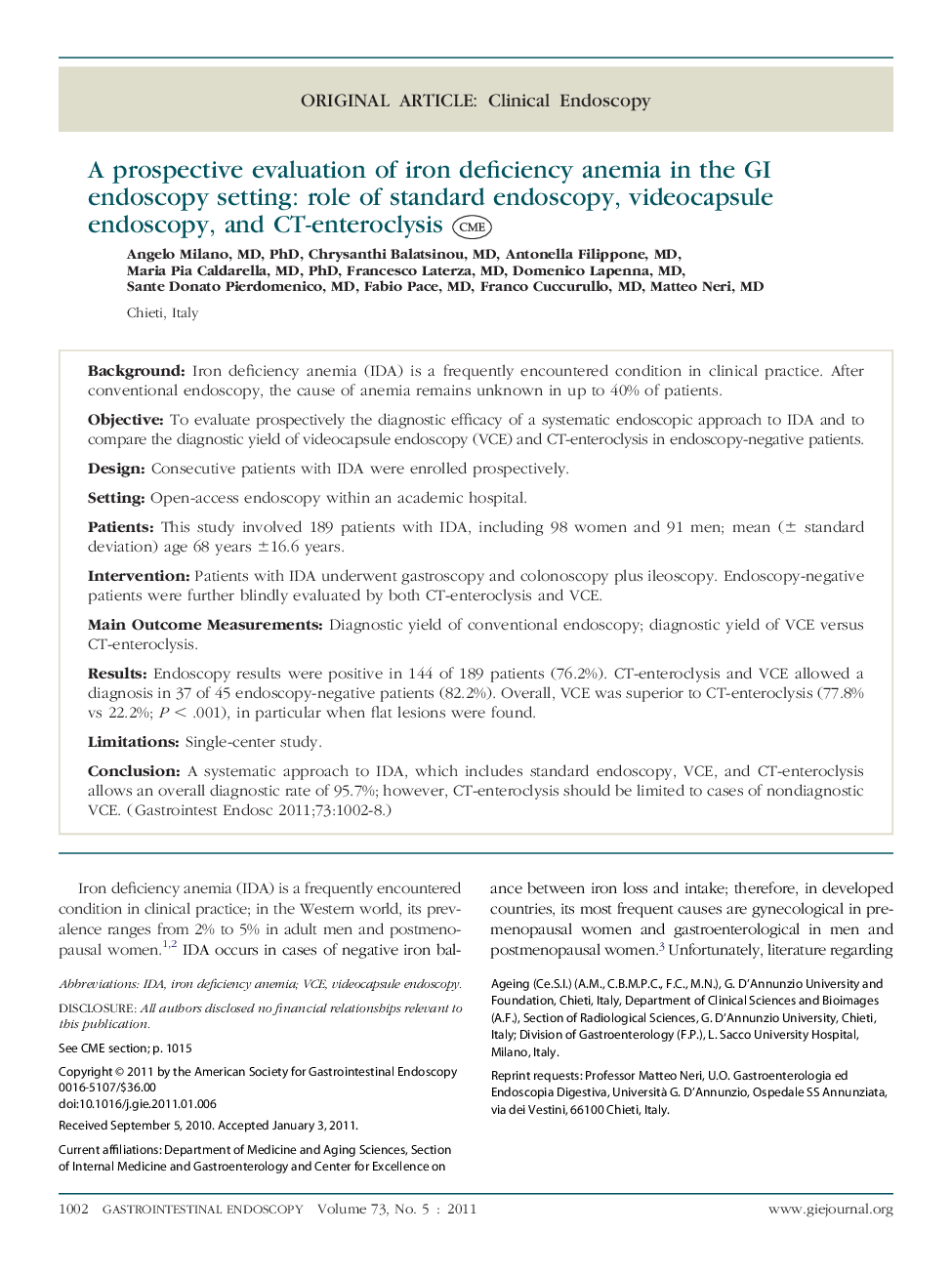| Article ID | Journal | Published Year | Pages | File Type |
|---|---|---|---|---|
| 3305306 | Gastrointestinal Endoscopy | 2011 | 7 Pages |
BackgroundIron deficiency anemia (IDA) is a frequently encountered condition in clinical practice. After conventional endoscopy, the cause of anemia remains unknown in up to 40% of patients.ObjectiveTo evaluate prospectively the diagnostic efficacy of a systematic endoscopic approach to IDA and to compare the diagnostic yield of videocapsule endoscopy (VCE) and CT-enteroclysis in endoscopy-negative patients.DesignConsecutive patients with IDA were enrolled prospectively.SettingOpen-access endoscopy within an academic hospital.PatientsThis study involved 189 patients with IDA, including 98 women and 91 men; mean (± standard deviation) age 68 years ±16.6 years.InterventionPatients with IDA underwent gastroscopy and colonoscopy plus ileoscopy. Endoscopy-negative patients were further blindly evaluated by both CT-enteroclysis and VCE.Main Outcome measurementsDiagnostic yield of conventional endoscopy; diagnostic yield of VCE versus CT-enteroclysis.ResultsEndoscopy results were positive in 144 of 189 patients (76.2%). CT-enteroclysis and VCE allowed a diagnosis in 37 of 45 endoscopy-negative patients (82.2%). Overall, VCE was superior to CT-enteroclysis (77.8% vs 22.2%; P < .001), in particular when flat lesions were found.LimitationsSingle-center study.ConclusionA systematic approach to IDA, which includes standard endoscopy, VCE, and CT-enteroclysis allows an overall diagnostic rate of 95.7%; however, CT-enteroclysis should be limited to cases of nondiagnostic VCE.
